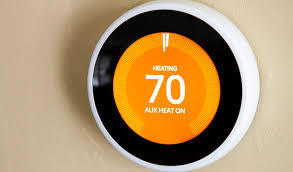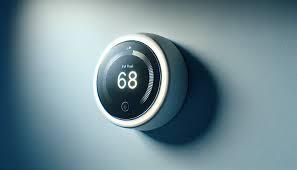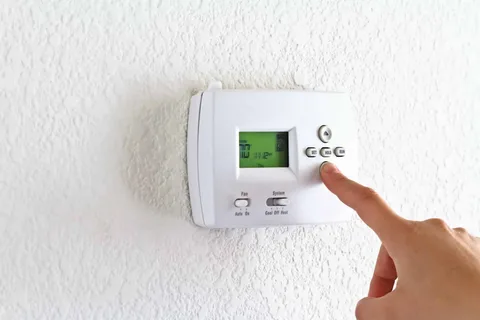Auxiliary heat, commonly referred to as aux heat, is a crucial component of many modern heating systems, particularly heat pumps. Understanding how to maximize the efficiency of aux heat can help homeowners maintain a comfortable indoor environment while optimizing energy use and reducing costs. This blog post will delve into the functionality of auxiliary heat, common questions like “why is my aux heat on,” and tips for ensuring your heating system operates at peak efficiency.
Understanding Aux Heat and Its Functionality

What Does Aux Heat Mean?
Aux heat is a supplemental heating source used in heat pump systems. It activates when the primary heat pump cannot maintain the desired indoor temperature on its own. This typically occurs during extremely cold weather when the heat pump’s efficiency drops.
Aux Heat vs. Emergency Heat: Key Differences
- Aux Heat: Engages automatically to assist the heat pump when necessary.
- Emergency Heat: Also known as em heat, is manually activated by the user when the heat pump fails or cannot function properly. This setting uses an alternative heating source, such as electric resistance heaters or a gas furnace.
Understanding these differences is vital for homeowners to ensure they are using their heating system correctly and efficiently.
Why Is My Aux Heat On?
Common Reasons for Aux Heat Activation
- Low Outdoor Temperatures: When temperatures drop significantly, the heat pump alone may not suffice to maintain indoor comfort, triggering aux heat.
- Defrost Cycle: During the heat pump’s defrost cycle, aux heat provides warmth to the indoor space while the outdoor unit defrosts.
- Thermostat Settings: Incorrect thermostat settings can cause aux heat to activate more frequently than necessary.
Optimizing Thermostat Settings
To minimize unnecessary use of aux heat, ensure your thermostat is correctly set and calibrated. Programmable thermostats can help maintain optimal indoor temperatures without over-relying on aux heat.
Maximizing Efficiency with Auxiliary Heat

Regular Maintenance
Proper maintenance of your heating system is crucial for efficiency. This includes regular inspections and cleanings of both the heat pump and the aux heat components.
Professional Inspections
Schedule annual professional inspections to ensure your system is running efficiently. Technicians can identify and rectify any issues before they become costly problems.
DIY Maintenance Tips
- Change Filters Regularly: Dirty filters can reduce system efficiency and lead to higher energy use.
- Clear Obstructions: Ensure that vents and ducts are free from obstructions to allow optimal airflow.
Discover the Best Heat Pump Brands for Every Budget

Selecting a best heat pump can significantly impact the efficiency and effectiveness of your auxiliary heat system. Here are some of the best heat pump brands catering to various budgets:
- Budget-Friendly: Goodman and Rheem offer reliable performance at a lower cost.
- Mid-Range: Trane and American Standard provide excellent efficiency and durability.
- Premium: Carrier and Lennox are known for their advanced features and superior performance.
Investing in a reputable brand can result in long-term savings through improved energy efficiency and reduced maintenance costs.
Emergency Heat Mode: When and How to Use It
Understanding Emergency Heat Setting
Emergency heat mode is intended for use when the primary heat pump system fails or during extreme weather conditions. Activating this mode switches the heating system to an alternative heat source, such as electric resistance heaters or a backup furnace.
EM Heat Meaning and Application
EM heat, or emergency heat, should be used sparingly due to its high energy consumption. It is a safety net for maintaining indoor comfort when the primary system is compromised.
EM Heat vs. Heat: Understanding the Differences
- Regular Heat Mode: Utilizes the heat pump as the primary heat source.
- EM Heat Mode: Switches to a secondary heat source, typically more energy-intensive.
The Role of the Inflation Reduction Act Heat Pump in Modern Heating Systems
The Inflation Reduction Act has incentivized the adoption of high-efficiency heat pumps, promoting energy savings and environmental benefits. Modern heat pumps under this initiative often come with advanced features that improve overall system performance, including more efficient aux heat integration.
Radiant Heat and Its Comparison with Auxiliary Heat
Radiant heat systems provide an alternative to traditional HVAC systems. Unlike aux heat, which supplements a heat pump, radiant heat directly warms floors, walls, or ceilings, offering consistent and efficient heating. However, it may not be suitable as a standalone solution in extremely cold climates, where auxiliary heat remains beneficial.
Conclusion
Maximizing efficiency with aux heat involves understanding its role, optimizing system settings, and performing regular maintenance. By investing in a quality heat pump, utilizing professional inspections, and being mindful of emergency heat usage, homeowners can ensure their heating system operates efficiently, providing comfort and cost savings throughout the winter months.
